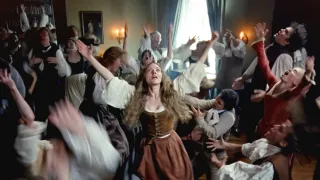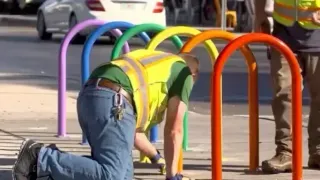December 25, 2018
Remembrance and Resolve: Oklahoma City National Memorial and Museum
Matthew Wexler READ TIME: 3 MIN.
"We have a building explosion downtown. Mass casualties. We're at Stage One Alert."
From Oklahoma City 911 tapes, April 19, 1995
My recent visit to Oklahoma City revealed a burgeoning metropolis with a small but mighty LGBTQ community, affordable and diverse restaurant scene, and a strong sense of civic pride. At its epicenter, though, OKC bears scars that will never fully heal. As the generations wear on, the attack on the Alfred P. Murrah Federal Building that left 168 people dead may fade to memory much like Pearl Harbor.
The Oklahoma City National Memorial & Museum will live on, though, offering visitors like myself the opportunity to reflect, mourn, and most importantly, connect to a more profound sense of humanity and resolve.
The Memorial Museum chronicles the events leading up to the deadly attack on April 19, 1995; the victims, survivors, and heroes; the world's reaction; the investigation and hearing; and a look toward civic responsibility and hope for the future. A total of 10 chapters offer a multi-sensory experience that visitors can experience at their own pace.
A 350-member task force was assembled by then-mayor Ron Norick to explore how to remember and honor those lost, and the result of their efforts is profound. "A Meeting, Recorded" is one of the most impactful chapters, as visitors enter a sealed room that plays the only audio recording of the blast, captured from an Oklahoma Water Resources Board meeting across the street from the Federal Building. The museum recently completed a $10 million enhancement, adding 35 new elements and never-before-seen pieces of evidence.
The Gallery of Honor presents personal stories of those killed – a cumulative reminder of the deep tragedy that unfolded on that fateful day. But the museum is more than a reflection on the past. Its mission statement, adopted in March 1996, calls for spirituality and hope, inspiring "visitors to live their lives more meaningfully." A learning center and ongoing educational programming are meant to "instill an understanding of the senselessness of violence, especially as a means of affecting government change."
The outdoor memorial offers a setting for quiet reflection with several key elements to experience. The gates of time frame the moment of destruction (9:02 a.m.) with a reflecting pool in between. Other features include a survivor wall that displays more than 600 names (the Murrah Building's only remaining wall) and a field of empty chairs. Hans and Torrey Butzer designed the chairs (made from bronze and glass, each etched with the name of a person killed), which reside in the footprint of the original building.
For a final moment of contemplation, allow for time under The Survivor Tree, an American Elm that withstood the deadly blast and has come to stand as a symbol of human resilience. Cuttings from the tree are now growing in nurseries throughout Oklahoma, spearheaded by Mark Bays, an urban forester.
From the grounds looking toward the Memorial Overlook, visitors see the following statement:
"We come here to remember those who were killed, those who survived and those changed forever. May all who leave here know the impact of violence. May this memorial offer comfort, strength, peace, hope and serenity."
It's a vivid reminder of the fragility of our lives and how cumulatively we must strive to avert other senseless acts of violence. A new year approaches, and while we can't control the vitriol of others, we can reflect on its impact and make daily choices born out of love and compassion.






